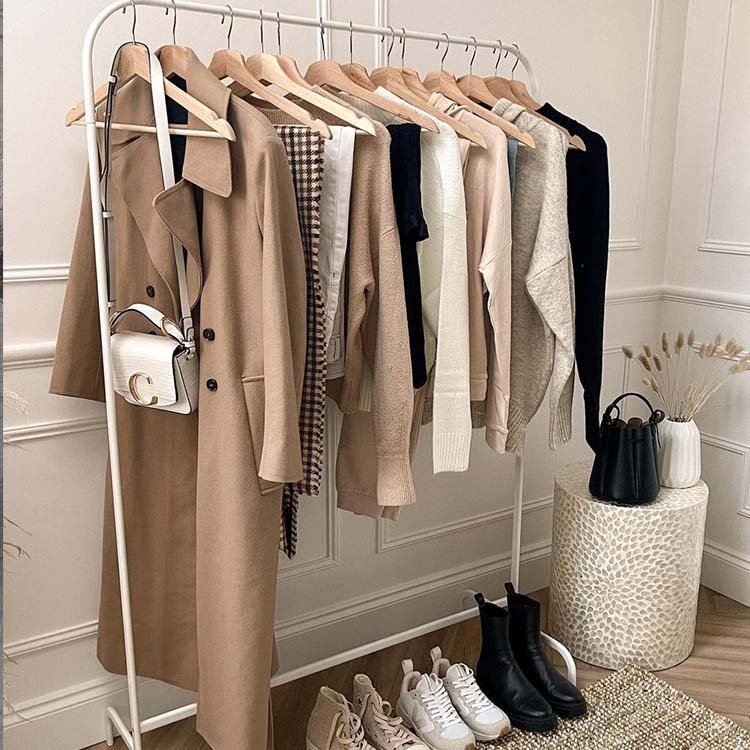Less is More: A Capsule Wardrobe Might be the Biggest Return on Investment in Fashion
*Article from Lexington Lines Autumn/ Winter 2022 Issue, pages 30-31
Check out the full issue here
For the past several decades, the fashion industry has inherited a reputation for manufacturing a colossal amount of waste. This is due not only to the product development initiatives that many big names in fashion pursue but also as a result of the corporate agenda.
Source: Forbes
According to Elizabeth Segran in Fast Company, fast fashion retailers promote this vicious cycle by churning out nearly 12,000 new designs every year, taking merely six weeks on average for their garments to go from sketches to shelves.
The universal desire to partake in the latest trends and styles results in widespread adoption of single-use consumerism. Once the fad dies down, these pieces often find their homes in landfills.
Because mainstream fast-fashion retailers typically favor micro-trends, consumers must turn to higher-end retailers when seeking investment garments.
The real question is, what does change look like, and how can we mitigate single-use consumerism? The answer is simple: invest in a capsule wardrobe.
Source: The Everygirl
Many credit the fashion blogger Caroline Rector of Un-Fancy as the pioneer of the movement. She started the capsule wardrobe conversation back in 2014, but it didn’t gain traction online until recently, when it was revived on TikTok.
The recent wide-scale advocacy for change, and the United Nations’ goal of cutting global carbon emissions in half within the next decade, means that sustainability-driven movements like the capsule wardrobe are finally getting the attention they deserve.
According to Eva Astoul from the fashion-forward blog Sustainably Chic, a capsule wardrobe is “a limited selection of interchangeable clothing pieces that complement each other.”
The goal is to be able to create a variety of different outfits with purely the capsule’s contents.
The garments are meant to be classic, meaning they transcend time and can be styled for many seasons to come. Neutral-colored garments can be the most versatile, but capsule aesthetics are purely up to the individual’s discretion.
If you are financially capable, consider investment pieces. A garment can be classified as such when it’s been purchased for the purpose of lifetime use.
You must consider the degree of longevity that the item was designed for. This includes characteristics such as quality, durability, and potential lifespan. Additionally, the shape and silhouette of the garment play an important role when determining if the piece will transcend temperamental fashion seasons and remain stylish.
While spending $100 on a single pair of pants might seem daunting, the long-term savings can justify the purchase. If the $100 pants can live in your wardrobe for decades, this can absolutely outweigh the practice of purchasing a new pair of $30 pants every year.
Undoubtedly, putting forward a substantial amount of money on a singular garment is a privilege: therefore, this facet of building a capsule wardrobe is purely optional and can be incorporated at your own accord.
According to Rector, there is a five step process to building a capsule wardrobe.
First and foremost, you must set a specific goal and work towards it starting with what you already own: Rector says that the golden number of garments is 37.
Each capsule should be centered on a season, which is approximately a three-month period.
The number of capsules you curate is subjective and depends largely on the climate where you live. But the objective is to avoid shopping for new garments for the duration of the season and wear only the selected garments within the capsule.
If necessary, Rector says, you should only shop for new clothes in the final two weeks of the season—and the cycle repeats.
The key phrase is “if necessary”; this method created discipline and promotes intentional purchasing.
The concept isn’t black & white; you can mold aspects of the methodology to your lifestyle: the number of garments, the seasonal periods, and the purchasing schedule.
Source: Tumblr
You should aim to abide by these guidelines to the utmost degree, but perfection is not necessary. Don’t let the fear of error intimidate you; any strides made in the right direction are admirable.
It must be noted that there are long term benefits to a capsule wardrobe that go beyond sustainability.
By shopping just once per “season,” you spend less on frivolous items. putting money into a timeless garment that embodies durability and quality ends up being more cost-effective than buying into fast fashion.
Capsule wardrobes allow access to versatile garments; narrowing your wardrobe helps to define your personal style. Every single item hanging in the closet is something you love; there will always be something great to wear.




